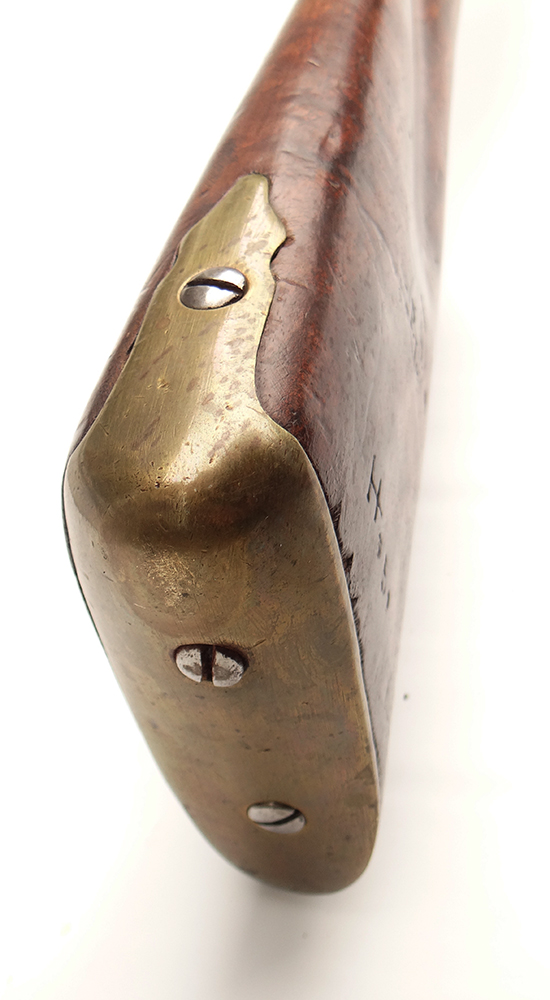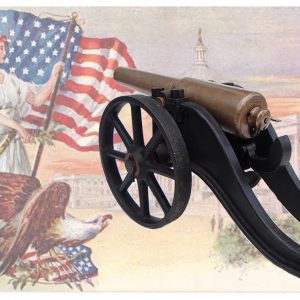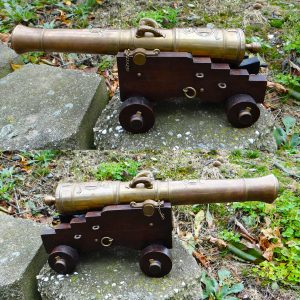

























Excellent Spanish Flintlock Musket, Pattern 1803/08
An excellent original example of a very rarely seen Spanish Flintlock Infantry musket of the Model 1803 as improved in 1808.
In their fine reference book – “Spanish Military Weapons in Colonial America ,1700- 1821”, S.B. Brinkerhoff & P.A. Chamberlain, Stackpole Books, 1972, page 37, plate 36 – the authors state in regard to the 1791 Spanish musket, 1808 variation; “Few specimens of this variation are known, but it appears that quite a number were produced.”
In the Spanish colonies of Mexico, Texas, New Mexico, Arizona, California, and Florida muskets of this pattern would have been frontline infantry arms which saw very heavy usage in situations and climates not favorable to the survival of iron and steel implements. They would also have been frontline weapons during the Napoleonic wars in Europe where Spanish armies fought on both sides and Spain was ravaged by both French and British armies in the course of that long conflict. In addition they would have been frontline arms during Mexico’s War Of Independence in 1821. Muskets which survived these conflicts through capture would have continued in service in Mexico and the Southwest. It is not unlikely that some muskets of this pattern served at the battle of the Alamo. Surviving muskets of the Napoleonic wars in Spain became obsolete in 1815 and likely were issued to militia and finally consigned to the African trade. Given their history it becomes apparent why examples of this pattern musket are seldom encountered.
This musket has a 42 3/4″ barrel, 1/4 octagon, in .72 caliber., overall length 58″. The 1808 improvement features a French pattern lock with internal mainspring. However the lockplate has an opening through the lockplate behind the cock. There are half and full cock notches cut on the back edge of the cock which are engaged by a sear protruding through the lockplate in the usual Spanish style. Despite this the tumbler retains its notches inside the lock and the sear also engages these interior notches. The result is a tumbler and sear twice as robust as found on a normal flintlock or miquelet lock. This feature may have been needed given severe conditions where these muskets saw service. This musket has a full complement of Spanish military markings including clear inspectors/ issue marks on the stock. One of these stampings is a “P.D.L.” in a circle on the right side of the butt. This mark is also seen on a Model 1803 Spanish musket in the collection of the ‘Arizona State Museum’, Tucson, AZ as illustrated in, “Spanish Military Weapons in Colonial America ,1700- 1821”, pages 36-37, plates 33,34,35.
Somehow this example of the Spanish 1803 infantry musket, 1808 variation, has survived in excellent original condition. The steel barrel, lock, trigger, ram rod, sling swivels, and screws are excellent with natural steel patina with some very light pitting on the lockplate. The barrel bears Spanish military marks, ‘R’, ‘P’, ‘EX’, a mark i can’t make out and a ‘Y’ above the touch hole. The lock has no exterior marks. The musket has all brass mounts which are in excellent condition with attractive golden patina. The rather fancy grade walnut stock is in excellent condition with great color and old/original surface. It bears a number of inspector’s and issue marks on both sides of the butt – please view all detail pictures.
Overall this is a remarkable specimen of a very rare original flintlock military musket with strong American Southwest and California historical association. This great looking musket also can also be associated with Spanish Colonial Mexico, and the Napoleonic wars. This rare original artifact from a most important historical era is most suitable for any private or public collection. It has been in an old private collection for the last thirty years.
Price: $3250.00 – SOLD










